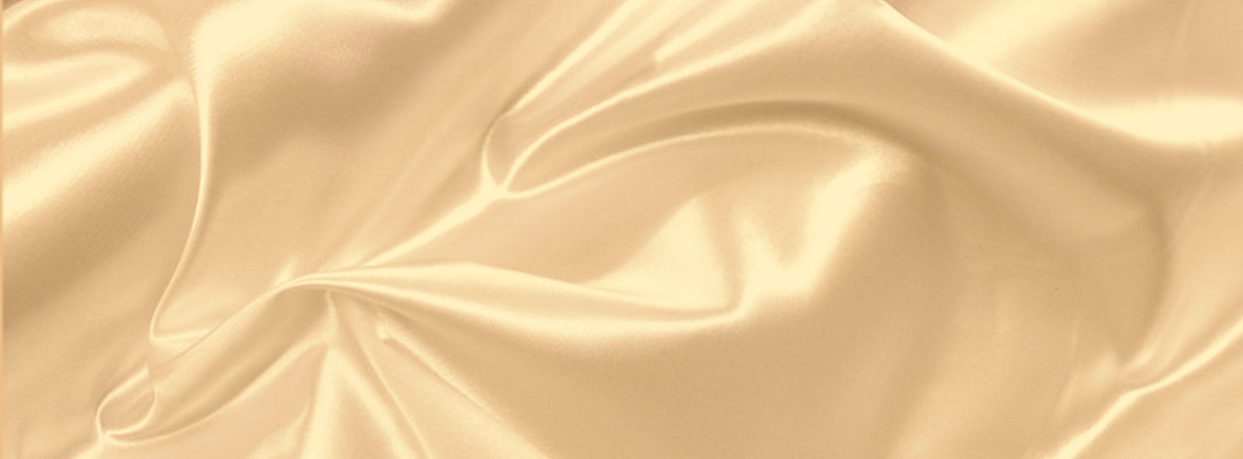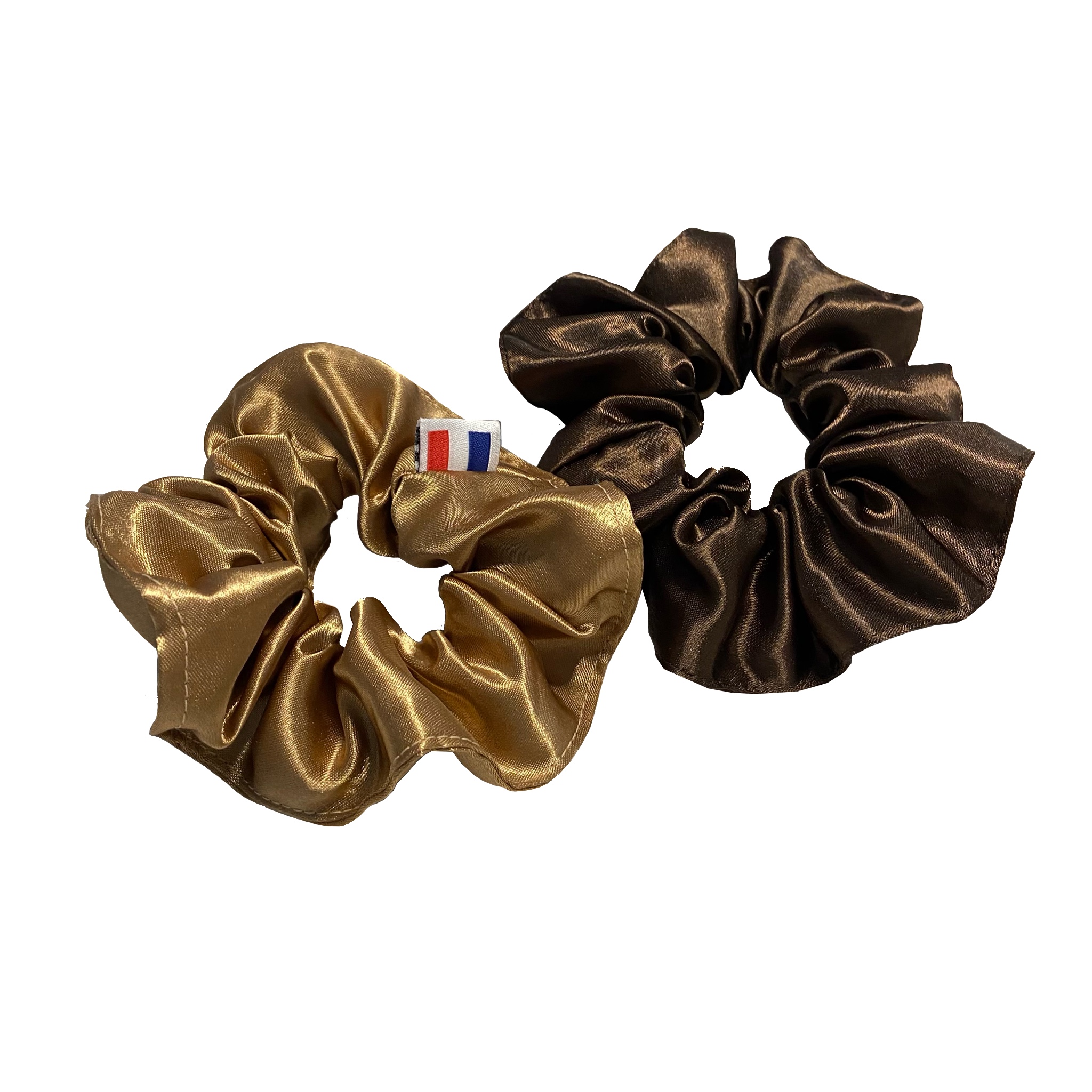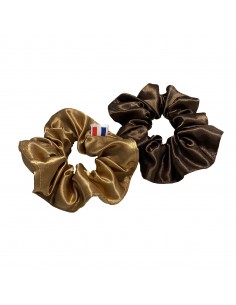Satin

You may have already seen that satin pillowcases are advertised as being a better alternative for your hair than cotton. Well, it's exactly the same for scrunchies.
Satin is a type of weave that produces a material that is typically bright, smooth, and usually with a shiny surface. It can be made from filament fibers such as silk, nylon or polyester. However, some definitions insist that a satin fabric can only be made from silk.
Satin dates back to medieval China, where it was made exclusively with silk. The weaving originated in the Chinese port city of Quanzhou, which was called Zaitun in medieval Arabic, hence the name satin today.
Different types of satin
Antique Satin: Uses unevenly spun yarns.
Corkskew: a succession of the same patterns printed repeatedly.
Satin crepe: the front has a shiny satin finish and the reverse has a non-smooth grain texture.
Damask: satin weave with square patterns or representing flowers.
Duvetine: supple and woolly fabric on one side.
Moleskine: cotton fabric with a satin side and a serge side.
Duchess satin: heavy and thick fabric.
The benefits of satin
This type of weave is highly valued for its many benefits, such as the fact that it is a durable type of weave since satin uses long filament fibers that are woven tightly.
Satin has a luxurious look and feel - this is often the main benefit and the reason it is chosen. It's also versatile, as seen in the different types of sateen and sateen listed above, and it can be durable, with the taut nature of the fabric being stronger than many plain weaves.
Satin is also wrinkle resistant, which is especially true for heavier satins. The resulting material is stronger and less prone to wrinkling than many other plain weave fabrics.
Satin is also a material that can be printed on, with vibrant high quality colors and images - this creates the perfect combination of a soft and luxurious look and feel.
What are the uses of satin fabric?
 Scrunchies: Satin scrunchies help protect hair from breakage, prevent frizz, reduce split ends, and prevent kinks in hair.
Scrunchies: Satin scrunchies help protect hair from breakage, prevent frizz, reduce split ends, and prevent kinks in hair.
Pillowcases: Satin is soft, so it won't pull on skin or hair, which means it's better than a cotton pillowcase and can help prevent the formation of wrinkles or reduce breakage and frizz.
Dresses: Satin is a staple of evening dresses and wedding dresses due to its beautiful drape and shiny feel.
Tapestry: One of the earliest uses of satin in Europe was for decorative furniture in the Palace of Versailles, and satin is still used for pillow covers, chairs, and other types of upholstered furniture.
Bed sheets: As the weave is supple and soft, satin is often used for bed linen.
So which satin do you prefer? Have you tried our satin scrunchies yet? Share your preferences and experiences with us!

